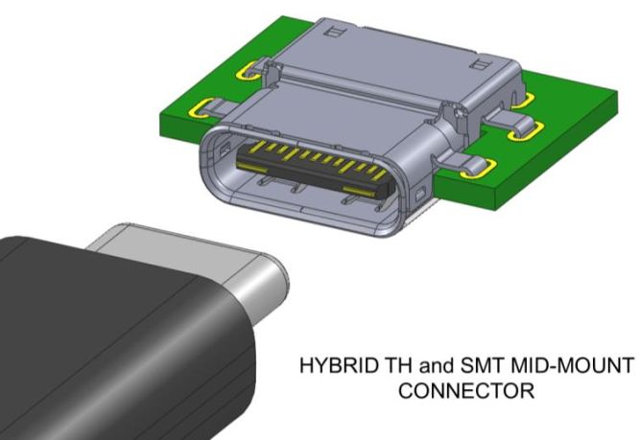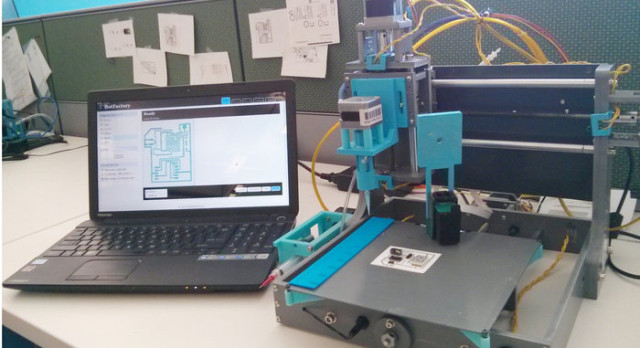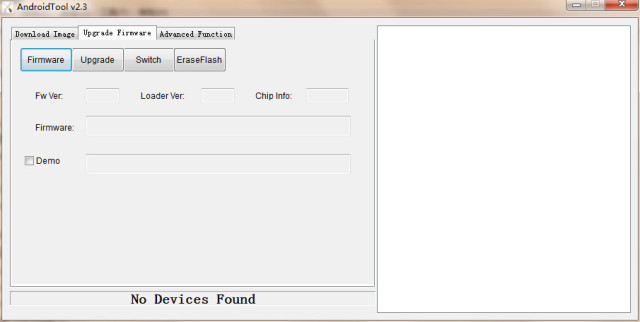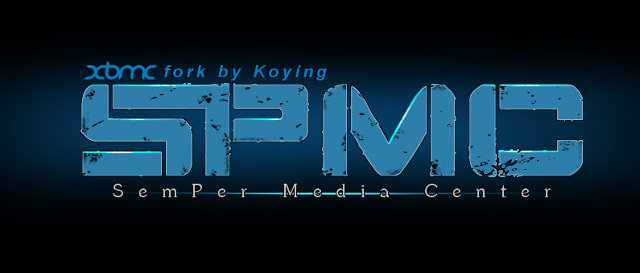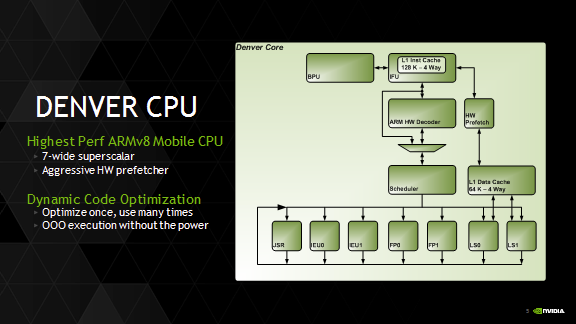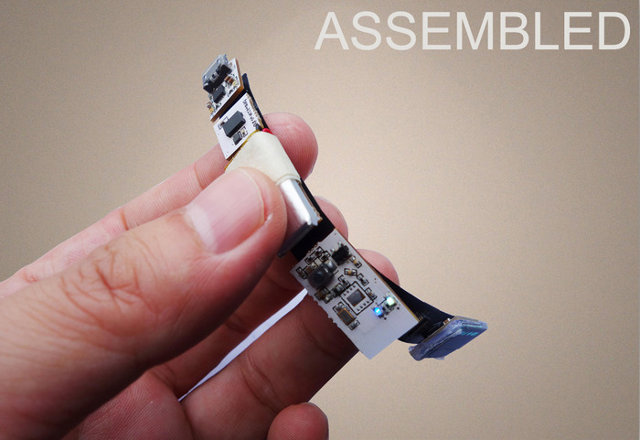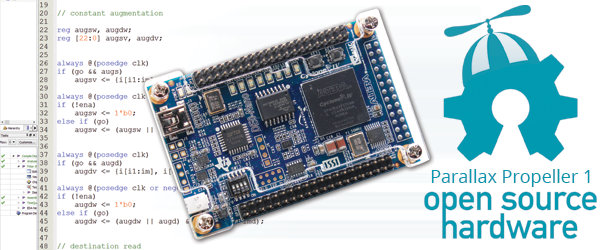We now have all sorts of USB receptacles and connectors, but this is supposed to eventually change thanks to type-C connectors, which are small and robust enough to be used in laptop, computer, smartphones, and other type of devices, and will replace the USB type A, micro and mini USB ports. Type-C connectors will also be reversible, so there won’t be a way to insert the cable upside down. The USB 3.0 Promoter Group has just announced the completion of the USB Type-C specification, and transferred it to the USB Implementers Forum (USB-IF) for ongoing management and the establishment of a compliance and certification program. Key features of Type C specifications include: Entirely new design Tailored for emerging product designs Robust enough for laptops and tablets; slim enough for mobile phones Similar to size of USB 2.0 Micro-B Usability enhancements – Reversible plug orientation and cable direction Supports scalable power charging […]
BotFactory’s Squink Prints and Assembles Electronic Circuits in Minutes (Crowdfunding)
When you design a circuit board, you first draw the schematics, then the PCB layout, and when you are happy with the result, output Gerber files, and send them to a company who will make a board for you. The last step usually takes a few days, and when you get it back the board may not work as expected, and you have to modify the PCB layout again, and request new boards, further delaying your project. Some students of NYU Polytechnic School of Engineering realized this issue, when only one out of eight teams managed to complete a EEG project on time mainly due to production delays as manufacturers took about 10 days to make and ship back the board. So some of them came together with one of their professor created BotFactory company and came up with Squink, a personal electronic factory, powered by the BeagleBone Black, that […]
How to Upgrade Firmware in Rockchip RK3288, RK3328, RK3399 Android TV Boxes
For some reasons, Rockchip is extremely fond of Windows based firmware tools, and instead of providing a simple SD card method, they’ve continued to use these awful tools to upgrade firmware for Rockchip RK3288, RK3328, RK3399 devices, and other Rockchip based TV boxes. I don’t mean to say these are useless, but they should not be used by end users, unless their device is bricked. Nevertheless, Rockchip has now release version 2.3 of their Android tools for Windows, and GeekBuying has published a guide showing how to do, which I’ll summarize below. Rockchip has also released an updated version for the Linux Upgrade Tool (upgrade_tool) v1.24 that allows you to do the update in Linux. [Update: The latest versions of DriverAssistant (Step 1) and AndroidTool (Step 2) can be found in Rockchip-Linux account in Github] The first thing to do is to make sure you’ve got the latest Rockchip USB […]
SPMC is a Fork of XBMC Available on Google Play Store, Amazon AppStore
XBMC 13, released a few months ago, is the first official release to support hardware video decoding on many ARM based Android devices. However, although both XBMC Android apks for ARM and x86 can be downloaded from xbmc.org, Team-XBMC have decided not to publish XBMC for Android on app stores such as Google Play, partially because video hardware decoding is not yet fully working on all popular Android SoC platforms and devices, but also because of the upcoming name change from XBMC to Kodi. Since the code is open source under GPLv2, anybody can build it, and somebody published XBMC on Android as a paid app, which would have been legal if they changed the name, but as they used XBMC trademark, it has been removed since then. Seeing this, Chris Browet (Koying), one of XBMC developer, decided to fork XBMC, apply some patches not yet approved in mainline XBMC, […]
More Technical Details & Benchmarks about Nvidia Tegra K1 “Denver” 64-bit ARM SoC
The 32-bit version of Nvidia Tegra K1 have generally received good reviews in terms of performance, especially GPU performance, and the company has also provided good developer’s documentation and Linux support, including open source drivers for the Kepler GPU (GK20A) found in the SoC. But as initially announced, Tegra K1 with also get a 64-bit ARM version codenamed “Denver”, and Nvidia provided more details at Hotchips conference. The 64-bit Tegra K1 will still feature a 192-core Kepler GPU, but replace the four ARM Cortex A15 cores found in the 32-bit version, by two ARMv8 “Project Denver” cores custom-designed by Nvidia. The multi-core performance of the dual core 64-bit Tegra K1 @ 2.5 GHz may end up being equivalent to the quad core 32-bit Tegra K1 @ 2.1 GHz, but the single core performance will be much better thanks to a a 7-way superscalar microarchitecture (vs 3-way for Cortex A15), as […]
Vigekwear is a Modularized, Open source, Wearable BLE Development Kit (Crowdfunding)
[Update: Atomwear has been renamed to Vigekwear due to (Intel’s) copyrights infringement]. Giayee is a company mainly manufacturing Android tablets, thin clients, and mini PCs, but their latest product, called Atomwear, is a Bluetooth Low Energy (BLE) development kit based on Nordic nRF51822 chipset that comes with various modules such as battery charger, accelerometer, gyroscope, OLED display, heart rate monitor, etc… which connect together via 24-pin connector on a standard rigid baseboard or a flexible printed circuit (FPC). All modules are connected via the same 24-pin connector with power, I2C, SPI, UART, ADC, and GPIOs signals. The baseboard and FPC both contain 6 such connectors connected in parallel for up to 6 modules, and two baseboard can be connected together via a bridge circuit to accept more modules. The minimum configuration is with a BLE MCU module, and a power module. The different boards and modules are listed as follows: […]
How to Root Rockchip RK3288 Devices
As Rockchip RK3288 based tablets and TV boxes are slowly starting to reach end-users, it may be a good time to post instructions showing how to root your Android device. Geekbuying has just published a guide to root RK3288 tablets and media players. The instructions below require a PC or Virtual Machine running Windows XP/7/8, but hopefully instructions to root under Linux similar the ones for RK3066/RK3188 will surface soon. Install Rockchip USB drivers by downloading the latest DriverAssistant which adds support for Rockchip RK3288. Simply extract the files and click on DriverInstall.exe to complete the installation. Download the latest version of VRoot tools. and basically follow the same instructions as for Amlogic S802 root which I’ll summarize below. Make sure USB debugging is enabled in your device (Settings->Developer Options->USB Debug) Connect your RK3288 device to your PC via a USB cable. (OTG port) Start VRoot. It should detect your […]
Parallax Propeller 1 P8X32A Open Source Multi-core MCU
Lots of electronics devices are now powered by open source software such as Linux, open source hardware is not as wide-spread, but gaining tracking traction thanks to the like of Arduino, Beagleboard.org, Olimex, and many projects on crowdfunding websites, and now we even start seeing some open source silicon. Existing open source processors include LEON3 (SparkV8) MCU, OpenRisc, and just very recently, LowRISC, based on 64-bit RISC-V instruction set architecture, has been announced with the backing of some of Raspberry Pi co-founders, Google ATAP, etc… and is currently being developed at the University of Cambridge, UK. Parallax Propeller 1 P8X32A is another MCU which has been open sourced last week. Propeller 1 P8X32A had however been released in April 2006, and can be sourced as a 40-pin DIP chip for prototyping, and 44-pin QFP and QFN for production, and come with the following key features: Power Requirements: 3.3 VDC […]


